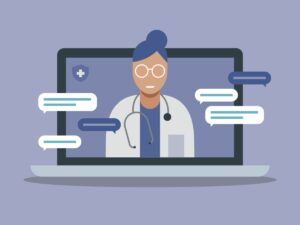Less Sodium, More Potassium Associated with a Lower Heart Attack and Stroke Risk
A study released at the end of 2021 found that higher intake of sodium was associated with increased risk of heart attack and stroke over nearly nine years among more than 10,000 healthy participants. Higher intake of potassium was associated with lower risk. Sodium and potassium intake were estimated the most accurate way possible: by measuring excretion of these two minerals in participants’ urine. The researchers calculated that each daily increment of 1,000 milligrams (mg) in sodium excretion was associated with an 18 percent higher cardiovascular risk, and each daily increment of 1,000 mg in potassium excretion was associated with an 18 percent lower risk.
U.S. adults consume far more than the recommended 2,300 mg of sodium a day, mostly from packaged foods and restaurant meals. Potassium (the best sources of which are fruits, vegetables, and legumes) is typically under consumed and is considered a “nutrient of public health concern.” Swapping out high-salt processed foods for unprocessed or minimally processed foods, particularly potassium-rich fruits, vegetables, and legumes, is an important step for reducing your risk of heart attacks and strokes.
Telehealth is as Effective as In-Person
Visits for Many Conditions

The use of telehealth—videoconferencing with a healthcare provider instead of going in for an office visit—has exploded during the COVID-19 pandemic. According to an analysis of 20 randomized controlled trials, these video checkups were just as good as the real thing when used instead of or in addition to office visits for people managing chronic conditions like diabetes, respiratory illnesses, and heart problems. Studies found similar clinical effectiveness, healthcare use, patient satisfaction, and quality of life.
There were not enough data to analyze the effectiveness of telehealth for preventive care or disease diagnosis where biological samples or a physical exam are necessary, and no studies evaluated the effect on health equity (the relative benefits among people of different races, ethnicities, or social status). More research is needed in these areas, but for follow-ups and ongoing care, video visits appear to be a good option.
Dietary Mercury Exposure Not Associated with Increased Risk of Death
For people who choose to limit their seafood consumption for fear of mercury exposure, a study recently published in the Journal of the American Medical Association should be reassuring. The prospective cohort study looked at seafood consumption and blood mercury levels in over 17,000 U.S. adults over age 20. Neither the amount of seafood people reported eating nor the levels of mercury in their blood were significantly associated with dying from cardiovascular disease (CVD) or any other cause.
The 2015-2020 Dietary Guidelines for Americans recommend adults eat at least eight ounces (or two servings) of seafood a week. Consumption at or above this level has repeatedly been associated with positive health outcomes. Although seafood is the primary source of mercury exposure in daily life, it is a good source of heart-healthy omega-3 fatty acids and frequently replaces less favorable foods in the diet. The Environmental Protection Agency recommends limiting intake of high-mercury fish (shark, swordfish, king mackerel, and tilefish). Women who are pregnant or breastfeeding should avoid these high-mercury fish, while eating a range of other fish and seafood to obtain brain benefits for their baby. For the general population, this study suggests we can enjoy seafood regularly without concern.
Sleep on Your Left Side to Reduce Reflux

If you have gastroesophageal reflux disease (GERD) or struggle with nighttime heartburn, sleeping on your left side, rather than on your right side or your back, may help. Acid reflux occurs when the valve separating the esophagus from the stomach leaks, allowing stomach acid to reach the esophageal walls. This can cause the discomfort commonly known as heartburn, and can damage the lining of the esophagus, increasing risk for esophageal cancer.
In a new study, researchers tracked the sleep position of 57 patients being monitored for acid reflux. They observed a significantly shorter acid exposure time and faster acid clearance when people were lying on their left side compared to the right side or on their backs.
























